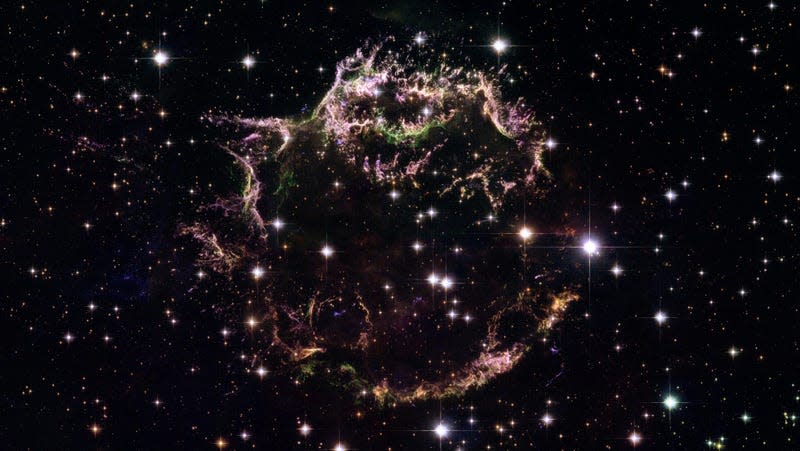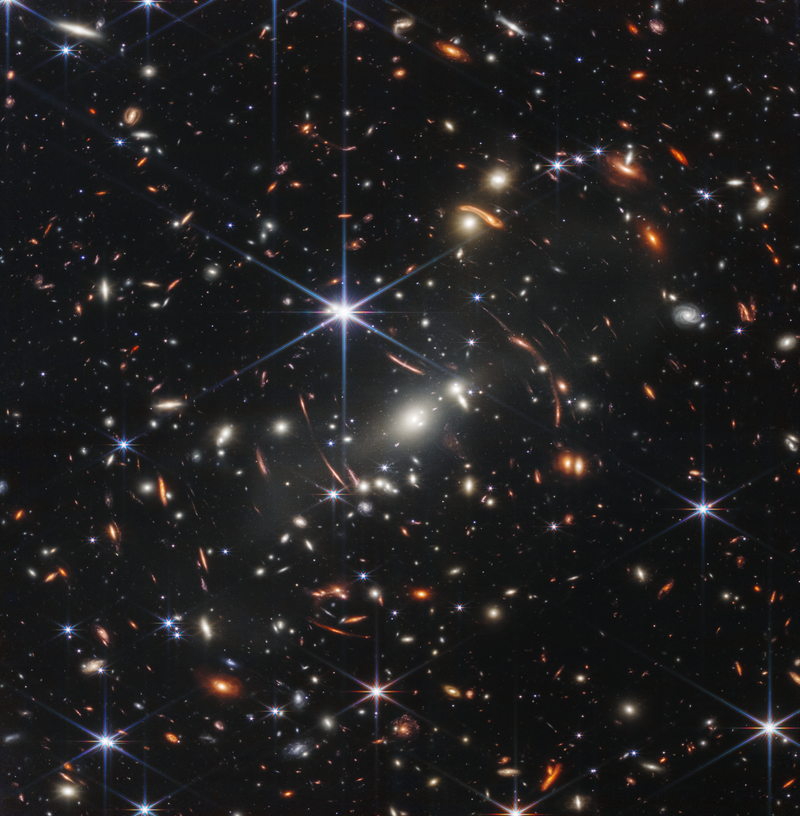Astrophysicists Just Made a New Count of All the Dark Matter and Dark Energy in the Universe

A Hubble Space Telescope image of Cassiopeia A, a supernova remnant.
A new analysis of more than 1,500 supernovae has put fresh precision on measurements of the dark matter and dark energy that permeate our universe.
According to the research, about two-thirds of the cosmos (66.2%) is made up of dark energy, and the remaining third (33.8%) is made up of matter. Almost all matter is what’s called “dark,” meaning we can’t actually see it—we only know it’s there because we can measure its gravitational effects. The regular matter we can touch and see makes up less than 5% of the universe. The team’s analysis, called Pantheon+, is published today in The Astrophysical Journal.
Read more
Remembering <em>Enterprise</em>: The Test Shuttle That Never Flew to Space
The Best Shortcuts On Mac: Snap Windows, Text to Speech, and More
The results also have implications for astrophysicists’ measurements of the Hubble constant, the number describing the rate of the universe’s expansion. This number has long been a puzzle, because it changes significantly depending on whether you measure it locally or on a cosmic scale.
“We have nailed down dark energy more precisely than ever to the leading theory, the cosmological constant, suggesting that the universe behaves in the way that can be explained by the simplest theory,” said Dillon Brout, an astrophysicist and Einstein Fellow at the Center for Astrophysics | Harvard & Smithsonian and the paper’s lead author. “In principle this is great, however our same dataset also brings the Hubble tension to a new level.” More on that tension in a moment.
Matter is all the stuff in the universe; dark matter is the unaccounted-for mass in the universe we cannot directly observe but is evidenced in its gravitational effects. Dark matter candidates include axions, WIMPs, and other subatomic particles—it could also be a combination of these theorized masses, or something else entirely. Dark energy (similarly named because we don’t know exactly what constitutes it) is what drives the universe’s accelerating expansion.
Pantheon+ looked at the rate of the universe’s expansion using Type Ia supernovae, the violent explosions that mark the end of stars’ life. Astrophysicists can use the apparent brightness and redshift of these supernovae to figure out how fast the universe has expanded during different periods of its existence.
Pantheon+ builds on Pantheon, itself an analysis of about 1,000 supernovae. The new work is twice as precise as the original Pantheon data. The team also combined their Pantheon+ results with measurements of the universe’s structure and its most ancient light, the cosmic microwave background.
Type Ia supernovae are some of the brightest events in the universe, and can outshine entire galaxies. Some of these supernovae happened in the very distant universe, meaning they are more redshifted. As the universe expands, it stretches the light traveling through it; by the time that light reaches Earth, it looks redder (with a longer wavelength) than it was when it was emitted.

The Webb Space Telescope’s first deep field, which shows gravitational lensing.
The team combined the Pantheon+ data with data from SH0ES, a collaboration that uses supernovae data to calculate the local Hubble constant, or how fast the universe appears to be expanding. Taken together, the data yielded a constant of 45.61 miles (73.4 km) per second per megaparsec. This still differs from the Hubble constant that’s calculated using the cosmic microwave background, the oldest light in the universe. This discrepancy between local and distant measurements is what Brout referred to as the “Hubble tension.”
The new finding heightens the certainty around the tension to a 5-sigma threshold, meaning there’s only about a one-in-a-million chance that the longstanding discrepancy in the Hubble constant measurements is merely a fluke.
The Pantheon+ data covers what Brout describes to as the “late” universe, meaning the supernovae factored into the analysis date from about 10 billion years ago to the present. Some current theories about closing the gap between the two Hubble numbers involve scrutinizing the oldest physics in the universe, using light sources like those seen by the Webb Space Telescope.
Fortunately, Brout said, there are instruments on the horizon that will “usher in a tidal wave of supernovae, dwarfing the current Pantheon+ sample.” Chief among them are the Vera Rubin LSST camera (which Gizmodo visited last October and is set to be completed in early 2023 ) and NASA’s Nancy Grace Roman Space Telescope, expected to launch in the mid-2020s.
For the measurement of the Hubble constant, it would be a big help to capture data on a nearby supernova—which means waiting for a nearby star to die. If that happens, new technology like the Webb telescope can quickly image it in the infrared and near-infrared wavelengths. Those measurements will help scientists understand how the dust surrounding supernovae can cause error in astrophysical calculations, thereby improving accuracy of the Hubble constant measurements.
Research like this should bring us closer to finally cracking the mystery of dark energy and dark matter—though for now, we’re still stumped.
More: Astronomers Calculate Universe’s Age With Atacama Desert Telescope

 generic
generic 